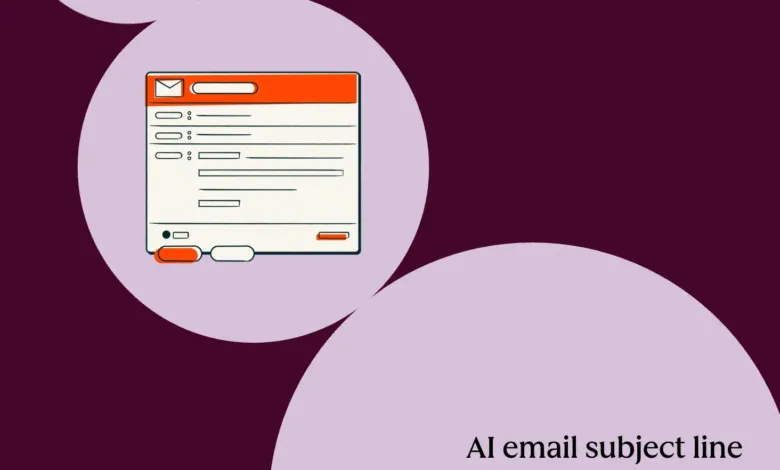AI Email Subject Lines That Boost Revenue & Conversions

▼ Summary
– AI email subject line optimization uses machine learning to analyze subscriber behavior, test variations, and continuously learn what drives engagement.
– True AI optimization differs from basic AI generation by creating a smart system that adapts to audience behaviors and measures real business impact.
– Effective AI optimization requires clean, well-segmented data and integration with CRM systems for personalized, scalable subject lines.
– Implementing brand voice guardrails and structured prompts ensures AI-generated subject lines maintain consistency and avoid compliance issues.
– A/B testing with AI involves generating multiple variations, analyzing results to identify winning patterns, and applying learnings through continuous iteration loops.
The success of your email campaigns often hinges on a single element: the subject line. AI email subject line optimization transforms this critical marketing component from guesswork into a data-driven science, analyzing subscriber behavior patterns to predict engagement before you even hit send. This approach goes far beyond basic AI generators that simply brainstorm ideas, creating instead an intelligent system that continuously tests variations and learns what drives your specific audience to open, click, and convert.
Many marketers mistakenly believe that using an AI tool to generate subject line ideas constitutes true optimization. The reality is quite different. Basic AI generation provides one-time creative suggestions, while comprehensive optimization establishes an ongoing cycle of testing, analysis, and improvement based on actual performance data. When implemented within platforms like HubSpot’s Marketing Hub with integrated AI capabilities, this process connects directly to your customer data, enabling personalized testing across segments while tracking real conversions rather than just open rates.
Effective AI optimization requires clean, well-organized contact data to understand audience preferences accurately. Before implementing any AI system, ensure your contact database features standardized formats, complete records with critical fields populated for at least 80% of contacts, regularly updated information with bounced emails removed monthly, merged duplicate profiles, and clear permission status records for compliance. This foundation allows AI to generate subject lines that reference a contact’s recent interactions, upcoming renewals, or browsing history, creating relevance that standalone email tools cannot match.
Creating effective AI prompts with brand voice guardrails involves developing structured instructions that tell AI exactly how to write in your brand’s unique style while automatically preventing off-brand language. A proven prompt template includes role definition (“You are [Company Name]’s email marketing specialist”), tone parameters (“Professional yet approachable, confident without arrogance”), audience context (“Writing for [segment] who [key challenge]”), and specific dos and don’ts. This systematic approach ensures every generated subject line sounds authentically like your brand while exploring creative variations that drive engagement.
Personalization transforms generic subject lines into individually relevant messages through CRM tokens that dynamically pull specific information from your customer database. The most effective approach combines AI-generated content with strategic token placement, creating unique messages at scale without manual customization. For new subscribers, start with minimal tokens to build trust (“Welcome! Your marketing toolkit awaits”). Active leads respond well to moderate personalization (“[firstname], see how [company] uses AI”), while loyal customers deserve full personalization that maximizes relevance (“[firstname], your [product] renewal saves [discount_amount]”).
Implementing AI-powered A/B testing requires a systematic approach that automatically generates multiple variations, tests them across audience segments simultaneously, and uses machine learning to identify winning patterns. Begin with a clear hypothesis like “Adding urgency tokens will increase open rates by 20% for cart abandonment emails.” Define testing variables across tone (professional vs. conversational), benefit focus (feature vs. outcome), structure (question vs. statement), and personalization level (no tokens vs. multiple tokens). Follow a structured testing timeline: Day 1 for planning and generating 20 AI variations, Days 2-3 for initial testing with 10% of segments, Days 4-5 for validation with top performers, and Day 6 for full deployment of winners to remaining contacts.
Building a continuous iteration loop transforms one-time tests into compounding knowledge that improves with every campaign. Establish a weekly rhythm where AI analyzes weekend test results on Monday, you review proposals and select new tests on Tuesday, deploy to fresh segments on Wednesday, monitor early indicators Thursday-Friday, and let tests run through the weekend for maximum data collection. This process uncovers unexpected correlations that would typically require weeks of manual analysis, such as discovering that urgent language increases opens by 32% for cart abandonment emails but decreases them by 18% for educational content.
Measuring the real business impact of AI-optimized subject lines requires tracking performance beyond vanity metrics. Start with open rates as a baseline quality signal, but focus on clicks to priority links like demo requests, pricing pages, and purchase buttons. Create custom dashboards that visualize subject line performance across segments and time periods, highlighting winning patterns and flagging underperforming segments needing attention. Document every successful subject line pattern in a searchable “plays that won” library organized by segment, campaign type, emotional trigger, and performance metric, transforming scattered test results into a strategic asset that compounds in value.
Safeguarding deliverability during AI optimization involves implementing automated checks to ensure every generated subject line meets legal requirements, avoids spam triggers, and maintains sender reputation. Essential compliance measures include avoiding deceptive phrasing like false urgency claims, limiting excessive punctuation to one exclamation point maximum, blocking high-risk phrases such as “Act now” and “Limited time,” and ensuring subject line promises match email content exactly. Configure your AI to flag potentially non-compliant subject lines for legal review, especially those mentioning health claims, financial promises, or competitive comparisons.
Implementing AI subject line optimization within HubSpot combines generation capabilities with testing infrastructure to create, personalize, and automatically deploy winning subject lines. The streamlined workflow begins with selecting a target segment of at least 2,000 contacts for statistical validity, running AI prompts with your brand voice parameters, applying appropriate personalization tokens, adding compelling preheader text that complements rather than repeats the subject line, launching A/B tests with 20% sample size and 24-hour duration, and reviewing results to document learnings for future campaigns. This approach transforms email marketing from a time-consuming task into an automated competitive advantage that grows smarter with every send.
(Source: Hubspot)





